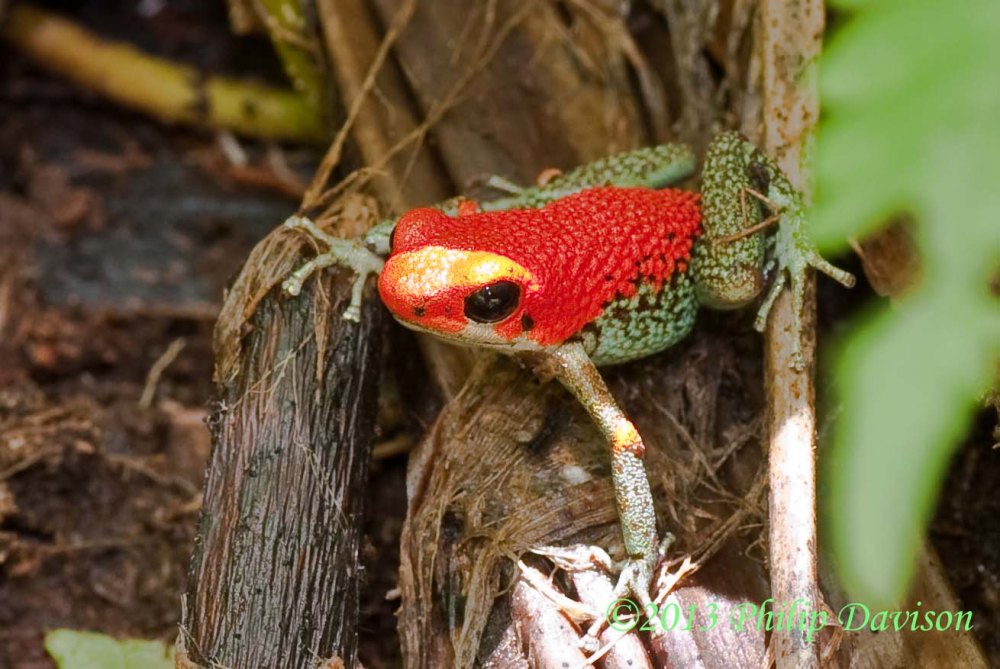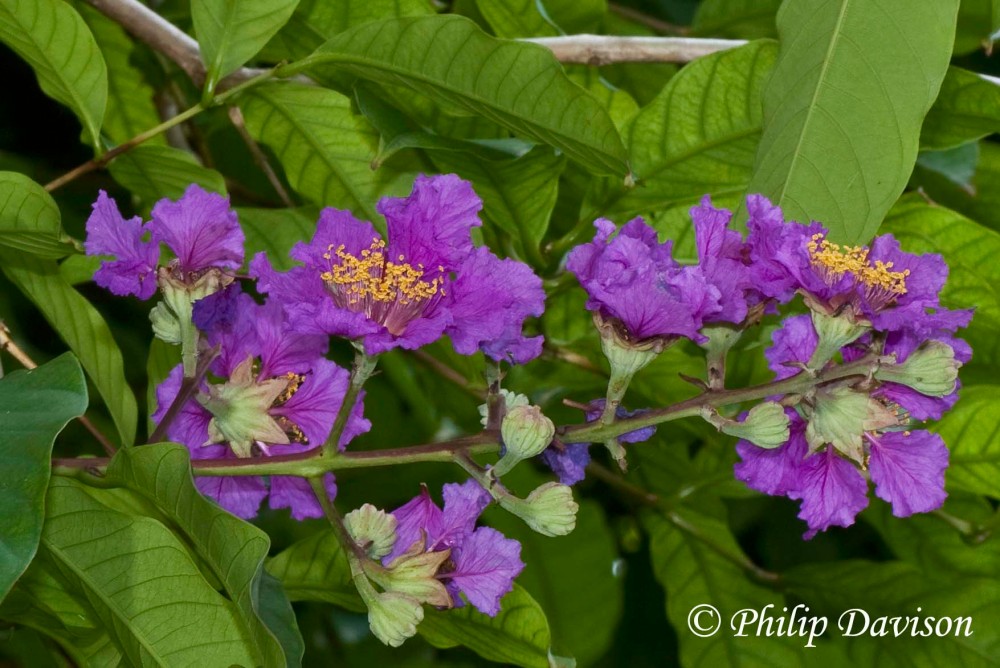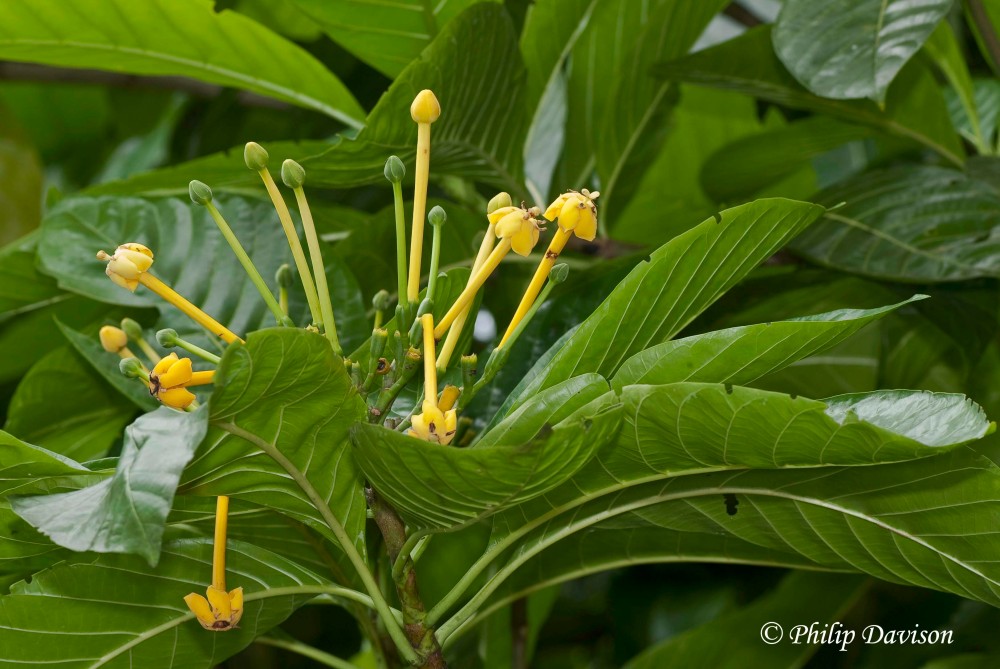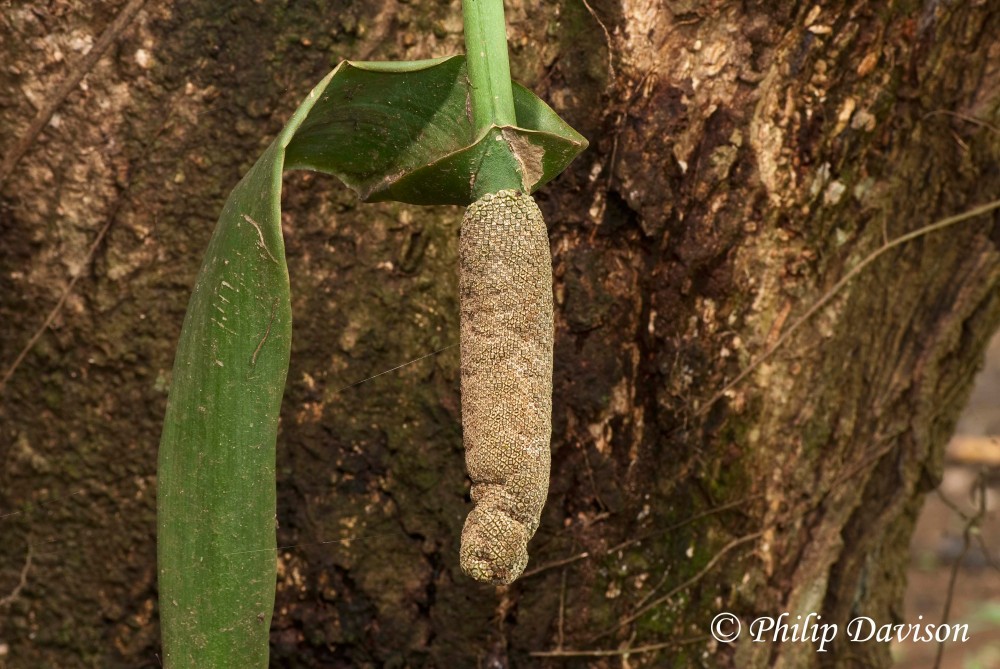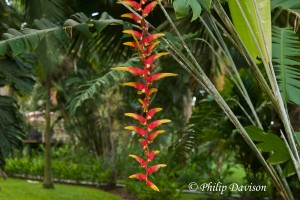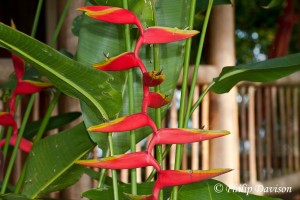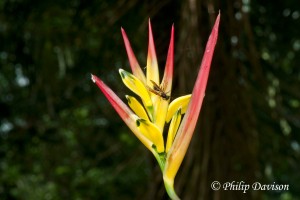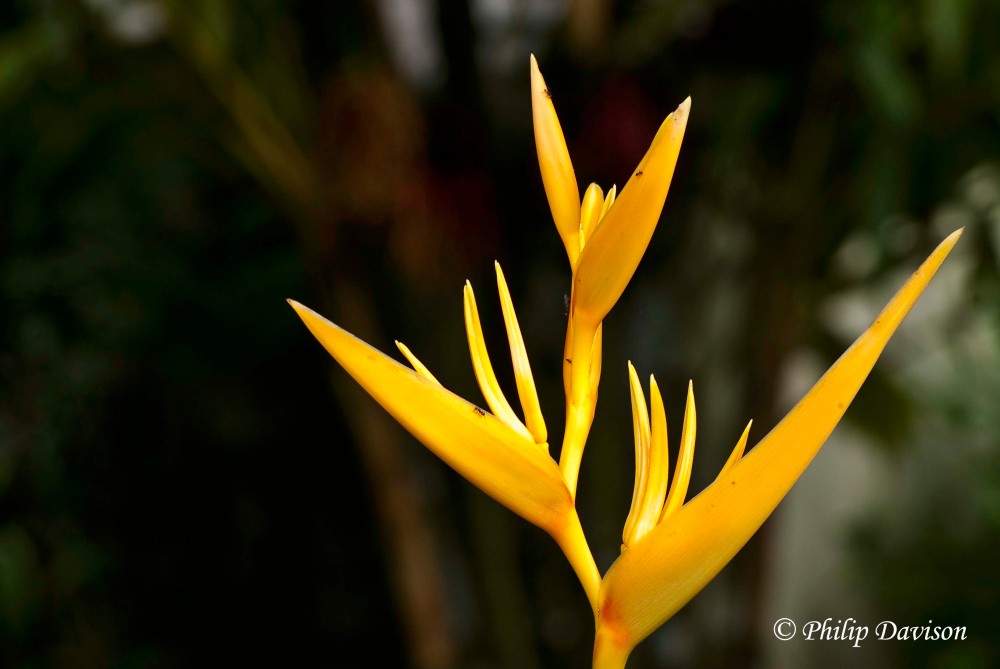La Tarde, Osa Peninsula, September 2013
A Path Well Travelled
It had been exactly one year since I last visited La Tarde with my friend and fellow biologist Mike Boston. Last year’s visit had resulted in a day trip to La Tarde included in the list of excursions offered by Bosque del Cabo Rainforest Lodge. A certain percentage of the visitors to Bosque have an interest in the reptiles and amphibians of the area. Bosque has a rich herpetofauna which can be experienced without too much searching. But one thing that becomes apparent is that once you start to search further afield you will find that there seems to be pockets of isolated populations of certain species in different locations. It might well be that you get a species of frog which occurs in large numbers in one locality and then there may be a gap of several miles or more before you encounter another population of the same species. The reason for my first trip to La Tarde, apart from the excellent reviews I was hearing, was that the area contained a diversity of amphibian and reptile species not found at Bosque. On my visit a year ago I was not disappointed. But there were one or two things that I had taken photos of where the resulting images had not been great.
So last week the weather had been perfect each day with clear blue skies and warming sun. Each night experienced a little rain just to keep things damp and the creeks flowing. The lodge was quiet so it seemed like an opportunity was being offered that shouldn’t be ignored. I phoned Mike and he too seemed keen to go, despite the fact that he already spends a lot of time there. With camera equipment packed and rubber boots at the ready off we went in the hope of capturing the images that eluded me one year earlier.
Nature Boys
It has been said before but it bears repeating that Mike and I have been friends for a long time, 37 years in fact. We met within the first few days of starting university and found we had the same interests and passions in life, the foremost of which was natural sciences in general and herpetology in particular. Mike had been raised in the tropics and always dreamt of returning. I had never been but the concept of going and living in a tropical rainforest with its inherent high biodiversiy is one that continually played on my mind. It should therefore come as no surprise that nearly 40 years after our first meeting and for the past 13 years we have lived only a few miles apart on one of the most biodiverse regions on the planet, the Osa Peninsula, Costa Rica.
Mike has been taking guided tours into the National Park for the past 15 years. He has a reputation as one the most respected and knowledgeable guides on the peninsula. He should be, he has spent the majority of his life studying tropical ecosystems. He has many more feathers in his cap though. A certain proportion of his work is tropical field studies with High School students as well as undergraduates from North America and Europe. He has worked as a consultant in the production of many television documentaries for companies all around the world.
Change of Plan
Several years ago, rather than take people on day trips into the National Park where time and wildlife viewing were limited he changed his itinerary and started to visit La Tarde instead. Mike has always been keen on helping to develop local small sustainable business ventures. He feels it is important to help the people of the area to make a living from tourism without overly exploiting the area. La Tarde was started as an ecotourism project by Eduardo Castro, a man who had formerly farmed the area but lost most of his livestock to the larger predators that live here. Rather than fight the situation, hunting and killing the large cats, he decided to go with the natural course of events and bring in people to see just how wonderful the rich diversity of his land was. Being such a short distance from the main town on the peninsula, Puerto Jimenez, and with stunning views as you rise up into the hills above Corcovado National Park it became the natural destination of choice for Mike and subsequently for many of the other guides in the area.
A Venomous Beginning
We arrived for a late breakfast and as we sat chatting, readying ourselves for a walk through the forest, the sky turned from bright blue to dark grey and then black. We though it prudent of hang on for a while to see what would transpire. In front of the restaurant area, there is a valley. It seemed like all of that darkness sank down into the valley. We could hear the torrential rain pummeling the vegetation below our dry vantage point. It descended deeper and further down the valley then within 15 minutes it had rained itself out, all that was left were a few wisps of cloud that floated in the air, dissipated and disappeared. We were good to go.
We were going to start easy. Last year in the vegetation by the side of the restaurant there resided a small bright yellow Oropel, (Bothriechis schlegelii), the Eyelash Viper. This snake comes in an unbelievable variety of color forms. Today in a bush close to the ground were two more individuals but both sporting totally different base colors and patterns. In this phase the Eyelash Viper is known as the Bocaraca. They were both small. The smaller of the two had a rich reddy brown base with darker brown blotches. The other was an overall greeny blue with orange patches and rings edged in black. They sat motionless as I set up the camera and took the shots. Female Eyelash Vipers give birth to live young and the offspring can exhibit any one of the color variations and patterns.
Eyelash Vipers are arboreal and can be found everywhere from low down to higher up in the vegetation. They tend to be nocturnal in habits which is probably why these ones were not inclined to move. The cryptic coloration camouflages them perfectly against the background trunks and branches of trees so they hunt by ambush. Any unsuspecting small lizard, frog, rodent, bat or bird stimulates the snake to strike. As they live in trees they have to hold on to the prey so that the quick acting venom doesn’t result in it falling dead to the ground as a lost meal. It is not always easy to find Eyelash Vipers so to have two in the first few minutes of the day out was something of a luxury, especially in color variations I had not seen before.
Why Eyelash Vipers? Above each eye are two distinctive raised scales. It is not known why they have these adornments but one theory suggests it helps keep vegetation scraping against the eye as the snake makes its way through its leafy environment.
The Poison Path
With that momentary distraction over Mike and I headed off down the trail. In the section of path before you enter the forest you transect a Granuliferous Poison Arrow Frog, (Dendrobates granuliferus), communal territory. Mike drew my attention to their sporadic calls, a high pitched cricket-like buzz, and it wasn’t long before he had located one. This particular individual was rather nervous and kept disappearing under the dead leaves covering the fallen log upon which it was sitting. The height was perfect for a photograph but every time I moved the camera it would disappear again. When it finally did emerge into the open it was sitting with its body in half bright sun and half dark shade, the contrasting conditions of which made it hard to get a well exposed shot. I took one but then it turned its back so I took another and then it jumped off the log and was gone.
The Poison Arrow Frogs are named after the toxic skin secretions that they possess and were widely thought to be used by the native peoples of Central and South America to coat darts and arrows which would then be fired into prey mammals such as monkeys. You might expect that the toxins used by Poison Arrow Frogs would be fairly uniform in chemical composition and physiological effects. Nothing could be further from the truth. The toxins are as varied and complex as the number of species producing them. So far over 100 different types of toxin have been identified from Poison Arrow Frogs. Most are lipophilic alkaloids but some are neurotransmitter blockers. Within a population of the same species the toxin can be weaker or stronger. Toxins acting as a neurotransmitter blocker affects the nerves to the diaphragm. The diaphragm stops working, the prey asphyxiates and drops dead to the ground. Truth to tell though, none of the Costa Rican Poison Arrow Frogs are that poisonous. They are generically named after a Colombian Poison Arrow Frog, Phyllobates terribilis, which is a bright lemon yellow in color. The native peoples of Colombia will not handle this species as the toxin can be absorbed through the skin. Instead they pick the frogs up in a leaf which is held over a naked flame, stressing the unfortunate amphibian and causing it to release the toxin from the skin.
Interestingly the frogs diet is the key to its toxic abilities. In the wild the frogs eat amongst other things, small ants. If kept in captivity and denied a diet of ants the frogs no longer have toxic skin secretions. There is much scientific study being carried out at the moment to discover why this is. It is not entirely certain whether the frogs directly sequester the toxins from the dietary prey or whether they metabolize the toxins from the digestion of certain species.
As opposed to many amphibians which are nocturnal, the Poison Arrow Frogs are diurnal. A frog hopping around on the forest floor during the day is a pretty easy target. That is why they have evolved those toxic skin secretions. But there is no point having a toxic skin secretion if the predators don’t know about it, hence the bright spectrum of glowing colors exhibited by different species. Anything glowing on the forest floor is not inviting itself as a meal, it is warning potential predators to stay away. The bright warning coloration is known as aposomatic coloration. Each individual species is highly variable in its coloration. The Granuliferus Poison Arrow Frogs at La Tarde are this beautiful dichromatic red and blue.
This frog also has another fascinating aspect to its natural history. During reproduction the male and female sit on the forest floor facing in opposite directions. The female spawns, the male then fertilizes the egg mass. Once the tadpoles develop the female frog carries them on her back up into the tree tops where she deposits them in the water-filled centres of bromeliads. The female then returns with a regularity to lay an unfertilized egg in each of the aqueous incubators which serves a food supplement for the developing tadpoles.
Bats Intent
With the photos captured it was time to leave the trail and head off down into the forested valley. Carrying a loaded camera bag and tripod I gingerly followed Mike down the steeply descending muddy path. It wasn’t long before his eagle eyes had spotted a couple bats roosting beneath a broad bent over leaf. These were Common Tent-making Bats, (Uroderma bilobatum), of the family: Phyllostomidae or Tailless Fruit Bats and they were culpable for the state of the leaf. The bats create the tents by ripping through the midrib of the leaf causing it to bend over. Having done as much the result is to have created a refuge from both the elements and predators. Any movement along the length of the leaf stalk is amplified towards the tip alerting the bats to the presence of a predator and off they fly. As the family name suggests they are largely fruit eaters. Quite often they will have two sets of roosts, day and night. During the day it is not unusual to find up to 40 bats in a roost. Early evening as the sun starts to set the bats leave the night roosts and head off to the night roosts. Here they wait until it is dark and then they fly out in search of whatever small fruit is in season, generally figs. The night roosts tend to be located no more than 100 meters from the fruiting trees. Both fruit and nectar feeding bats generally have a reduced sense of echolocation but a heightened sense of sight and scent at night. The bats don’t feed in the trees where the find the fruit, they carry it back to the night roosts in their mouths and then hold it between the wings while eating. Just before the sun comes up they leave the night roosts and return to where they are going to be roosting during the day.
The Tent-making Bats have two white lines down through the face. If during the course of the day a predator on the ground should glance up, the white lines serve to break up the outline of a clump of bats and giving the effect of dappled light being passed through the leaf. I tried not to disturb this pair of individuals and even though they knew I was there they obliged by remaining stationary while I took their picture.
Planted To The Spot
The descent became steeper and the mud became stickier. The forest on either side of the path was quite dense and in some places there were thick stands of heliconias growing. The animal biomass of a tropical rainforest may only be 0.02% which is another way of saying that just about all of the forest is vegetative tissue. But strangely enough the plants are quite often overlooked. A frequently heard comment is “I went for a walk in the woods today but I did not see anything”. The plant life is far more diverse than the animal life. The Neotropical forests are home to approximately 90,000 species of flowering plants. The whole of the North American continent, the United States and Canada combined have less than 700 species of tree. Costa Rica, the size of West Virginia has 2,600 species of tree. The Osa Peninsula, this tiny piece of land on the South West coast of Costa Rica has 800 species of tree, more than the whole of continental North America.
I do have a tendency to fall into the blinkered situation of only trying to photograph the wildlife and not the wild vegetation. One of the reasons is that plant identification is not always easy. As there were two species of flowering heliconias here I thought it might be an idea to add them to my limited collection of plant images.
Heliconias are that archetypal tropical garden plant. Although members of the family Heliconiaceae are pantropical in distribution, the majority of species belong in the New World. Costa Rica boasts 43 species of Heliconia, 18 of which are found on the Osa Peninsula. The leaves are both long and broad, they bear a resemblance to banana leaves. The flowers are the distinguishing feature. For the most part they come in shades of red, orange or yellow. These colors attract in hummingbirds, so the heliconias are hummingbird pollinated. Many species of heliconias have different shaped flowers and these correlate to the different types of hummingbird that feed from them. The reason the hummingbirds come to the heliconia is to obtain a feed of nectar. Hummingbirds require up to eight times their own bodyweight in nectar every day just to keep themselves flying.
The shape of the heliconia flower dictates the species of hummingbirds that can visit them. Different species of hummingbirds have different shaped bills and when visiting a variety of heliconia species get pollen dusted on different parts of the bill. Theoretically one species of hummingbird could therefore pollinate several species of heliconia. Heliconias with long flowers will be visited by hummingbirds that have correspondingly longer bills such as the hermits. The hermits are trapliners and during the course of the morning will visit several different patches of heliconia. Heliconias with shorter flowers will attract hummingbirds with shorter bills. These hummingbirds tend to be very aggressive and stay in one small area defending a patch of heliconias from all comers.
Each morning a new bract opens to reveal a fresh batch of flowers which will only last one day. Nectar not only attracts hummingbirds but also bees. The bees have a tendency to bite through the base of the flower and rob the plant of its nectar supply without carrying out its part of the relationship in terms of pollination. To avoid this situation, the heliconias produce their nectar first thing in the morning. That is when the hummingbirds but not the bees are active. Also the bract fills with water, drowning the base of the flower so keeping the bees out. If the bees do persist, they have to spend a lot of time and energy munching their way through the tough fibrous bract to get to the food supply inside.
Both of the species of heliconia I was looking at here had totally different shaped flowers. The short compact flowers are Heliconia imbricata. This species secretes a lot of liquid into the bracts rather than have them fill with rainwater. This liquid is acidic by nature and can support its own little ecosystem of creatures living within it. The other heliconia with the much longer, fewer and seperated flowers is Heliconia irrasa.
Death To Trees
A little way further down the path will have any visitor to La Tarde stop in his tracks and gaze in wonder at the sight in front of him. Encompassing the trail while towering above it is one of the largest Matapalos on the peninsula. It stands like a giant Triffid, so living, so organic, with its giant roots descending from a location seemingly hidden in the sky.
The Matapola is otherwise known as the Strangler Fig and along with their awesome aspect they have a fascinating life history. The Matapalo is a fig tree of the family: Moraceae. Like any other fig it produces a copious amount of fruit. If anything, a monkey or a bird, should consume one of those fruits and defecate at the top of a tree, that is where the Matapalo seed will germinate. So unlike most trees which germinate in the ground and grow up, the Matapalo germinates at the top and grows down.
The first thing it does upon germination is send long thin roots which grow descend like wooden plumlines to the ground. Within a short space of time they anchor and start to take up water and nutrients. Once this situation has been established from the point of germination at the top of the tree, the Matapalo sends out more tendrils but this time up and above the host tree. These produce leaf which subsequently shadow the host tree and inhibit its ability to photosynthesize. This is where this particular species of Matapalo finishes its takeover. Those roots that came to the ground divide and subdivide spreading the alien-like trees weight over a wider surface area. This particular species is Ficus zarazalensis. It is an endemic found nowhere else except the Osa Peninsular.
Other species of Matapalo send the roots down the host tree’s trunk. Here they anastomose and fuse eventually forming a huge shell around the host tree. The host tree can no longer grow and at the top can no longer photosynthesize. It dies and decomposes which then provides a huge amount of nutrients for the rapidly growing Matapalo which will eventually stand a massive but hollow tree in its own right. The name Matapalo comes from two Spanish words, matar – to kill and palo which is colloquial Spanish for a tree, so roughly translated Matapalo means “Tree Killer”. They will take over and kill any other tree except for other Matapalos. Matapalo seeds will not germinate on Matapalo bark, the exact inhibiting factor has not as yet been identified.
Raining Frogs
We continued our trek down the trail, our goal being the creek and whatever treasure it may hold. On the path sitting atop a small pinnacle of soil Mike noticed a tiny rain frog. This small individual was totally unconcerned by my presence as I lowered the camera equipment down to his level, sitting patiently while I took a few shots. At first sight I couldn’t make out which species it was, the markings bore no resemblance to any of the species of rain frog I had seen in the area. However with closer scrutiny I could see it was a Rough-skinned Dirt Frog, (Craugastor rugosus).
The Rain Frogs are totally terrestrial, they don’t need to return to water to reproduce in the manner of so many other amphibians. The male and female pair up in the leaf litter on the forest floor which is where the female will lay her eggs. There are only about 20-30 large, (in comparison with the adult), yolk-filled eggs. The whole process of development takes place within the egg, there is no free swimming tadpole stage. After 7 or 8 weeks a tiny frog, an exact replica of the adult, emerges from the egg.
Water World
We were almost at the bottom of the path now. A few more steps and we were in the stream. The last time I visited La Tarde I photographed some Water Anoles, (Norops aquaticus), that we don’t find at Bosque. Unfortunately I was photographing under a waterfall in very dark, wet conditions that the photos didn’t turn out too well. I wanted to correct that situation.
Walking along the creek we came to an overhang where Mike knew there was a good probability of finding the sought after lizards. Sure enough within moments of arriving at an overhang he pointed one out sitting on a small outcrop, its form all but indistinct from the dark, damp rock wall. I was faced with the same problem as last time, low light and water falling from above. But with a little perseverance and an umbrella held overhead aided by the fact that the subject was quite happy not moving I managed to get the shots.
There are seven species of anoles on the Osa Peninsula, five of which can be found at Bosque but as already mentioned not Norops aquaticus. Given the amount of water and perfect habitat conditions that is surprising but just as with localized populations of the poison arrow frogs that is probably the same situation with the anoles. Norops aquaticus, apart from its obvious partiality for wet habitats, is easily distinguished from other anoles by the broad brown transverse bands across its body and a pale band running along the length of its body on either side.
The anoles were not the only creatures inhabiting this dark dank area. On the dripping wall, facing head down was a large spider. This was one a water spiders of the genus: Trechalea. The body of a water spider is covered in water resistant hairs which not only keep them dry but also allow them to walk over the surface of the water. As might be expected the water spiders don’t make a web, they have a very specific way of hunting depending on species.
Some cling to the rock surfaces as this one was doing and catch prey passing by. The spiders body is covered in various types of hair or setae which can be sensitive to odor, movement or touch. Other species sit at the edge of the water anchored by the hind legs while the other legs are placed on the surface of the water. Any prey item in the water causes vibrations which are recognized by the spider. If it approaches too close the spider pounces and envenomates it.
A little further down the creek nestled into a drier nook, were a roost of bats. Our activity initially spooked them and they flew off but it did not take long before they returned and settled back into position. They were in an even less convenient position to photograph than the anole or the spider. They were hanging from the rock wall beneath the overhang, looking up into the falling water. They still had not settled and nervously moving from one spot to another not so far away but far enough to have to reposition the camera. Eventually I did manage to get a few shots.
It is sometimes very difficult to identify bats to species level unless you have them in your hand. Unless the bat has some very distinctive morphological features then quite often you need to be looking at the depth of greying down through the fur, counting warts on the lips and counting cusps on the teeth amongst other things. As far as we could tell these were more Short-tailed Fruit Bats of Family: Phyllostomidae related to the tent-making bats we has seen earlier. These were of a different Subfamily: Carollinae. This is where the identification ends, as even if you have the bat in hand the four species that inhabit Costa Rica are notoriously difficult to tell apart. All we can say is that they belong to the Genus: Carollia. Just like the Tent-making Bats, these are for the most part fruit eaters. But when fruit is out of season they are not adverse to feeding on insects too.
The time was getting on and we were getting hungry so it was time to return. I had obtained that for which I had primarily returned but I can’t imagine it will be my last trip to La Tarde. There are a host of other plants and creatures that I am sure are waiting to be discovered.
Driving back down the road there was one more stop we had to make. There is another heliconia Mike has seen on the way up, another endemic plant to the area. The flower was past its best but nonetheless it deserved a photo. This species in Heliconia danielsiana. It prefers wet but open situations which is why it was growing at the side of the road and not in the forest. It can be recognized by its rusty colored, hairy pendent inflorescence.
If you visiting the area and have a desire to visit La Tarde, then you experience will be enhanced many fold by going with Mike Boston. Take a look at his website and then contact him directly.
Website:
http://www.osaaventura.com
e-mail:
mike@osaaventura.com
Telephone:
(00 506) 2735 5670





